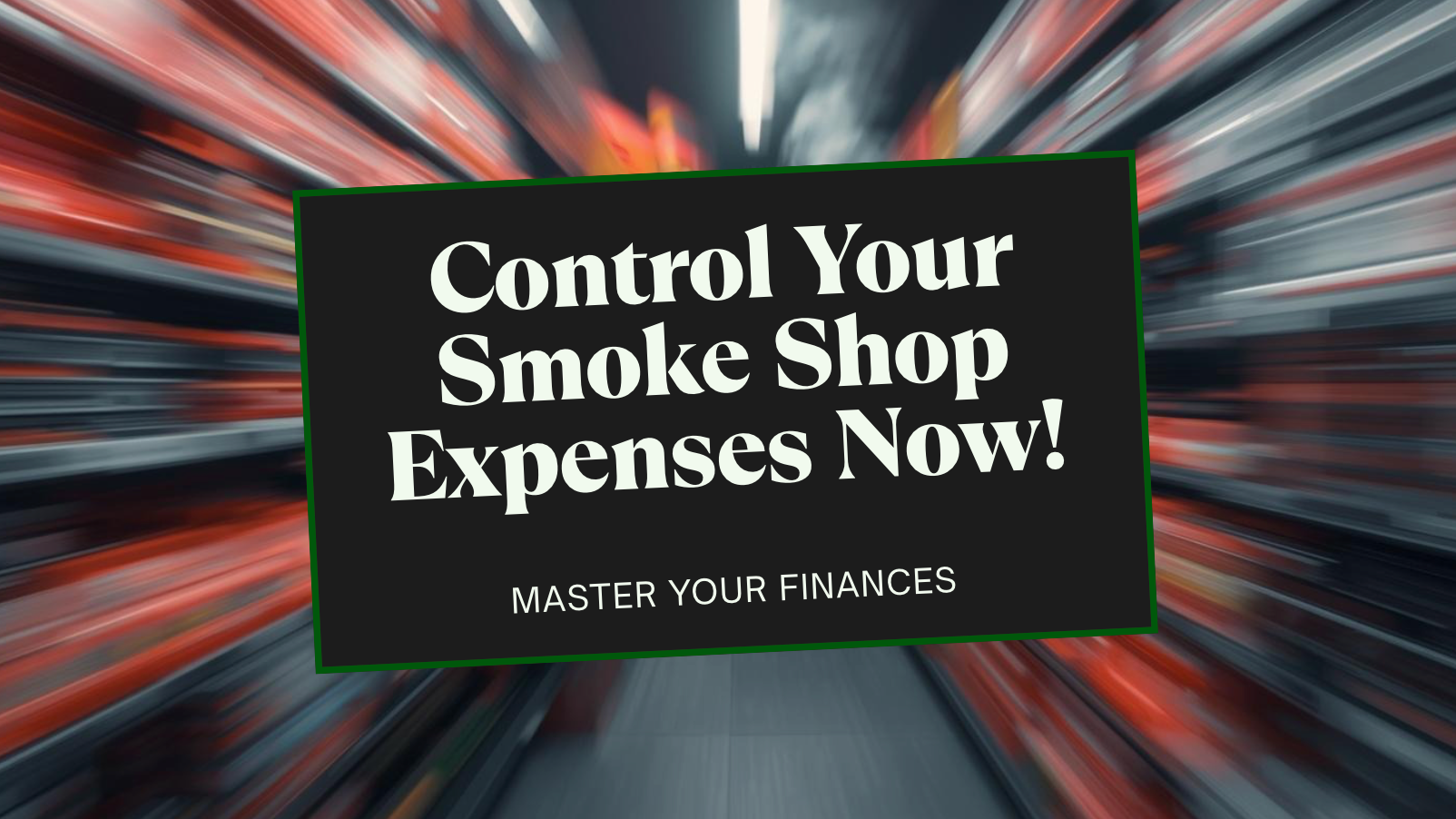Most smoke shop owners obsess over sales and forget the other side of the equation: expenses. Here’s the truth—sales don’t make you rich, profit does. And profit only exists if your expenses are under control.
Too many owners get sloppy. They treat their shop bank account like a personal wallet, sign up for services they don’t need, or buy “deals” from suppliers that aren’t deals at all. Before they know it, the money’s gone, and they’re wondering why they’re always broke even though the shop is busy.
It’s time to stop letting expenses eat your shop alive. Let’s break down the no‑BS way to get lean, stay profitable, and make sure every dollar you spend has a return.
Step 1: Know Where Every Dollar Goes
If you don’t track expenses, you can’t control them. Most owners think they know their costs, but when I look at their books, they’re shocked at the waste.
Key expense categories for smoke shops:
-
Cost of Goods Sold (COGS): inventory, shipping, supplier fees.
-
Fixed Overhead: rent, insurance, licenses.
-
Variable Overhead: utilities, cleaning, supplies.
-
Payroll: wages, taxes, benefits.
-
Marketing: ads, social media tools, print.
-
Miscellaneous leaks: personal expenses disguised as “business,” apps nobody uses, random subscriptions.
Action: Pull the last 90 days of bank statements. Highlight every dollar. If you can’t explain it, it’s waste.
Step 2: Separate Business from Personal
This is the rookie mistake that kills shops. Owners swipe the business card for groceries, vacations, or personal bills. Then they wonder why the shop “isn’t making money.”
Rule: Business money is business money. Personal money is personal money.
-
Open separate accounts.
-
Pay yourself a salary or owner draw.
-
Stop dipping into the register.
This one shift will give you clarity on whether your shop is profitable—or if you’re just cannibalizing it.
Step 3: Audit Inventory Spending
Inventory is your biggest expense—and your biggest trap.
-
Stop buying “just because the rep offered a deal.”
-
Don’t load up on 200 units of something unproven.
-
Stick to your A/B/C inventory system (fast, moderate, slow movers).
-
Rotate dead stock fast with bundles or discounts.
Your cash should be on shelves that move—not collecting dust.
Step 4: Negotiate With Vendors
Suppliers love owners who don’t ask questions. Don’t be that owner.
-
Ask about better terms—net 30 instead of COD.
-
Push for free shipping thresholds.
-
Leverage bulk orders on proven sellers—not risky products.
-
Shop around—loyalty is fine, but blind loyalty costs money.
Every dollar you save on COGS is a dollar that goes back in your pocket.
Step 5: Control Payroll Without Killing Service
Payroll is often the second‑biggest expense after inventory. Handle it wrong, and it’ll eat you alive.
-
Don’t overstaff slow shifts—payroll must match traffic.
-
Cross‑train employees so fewer people cover more tasks.
-
Track sales per labor hour—know who’s actually earning their keep.
-
Cut dead weight fast—don’t pay people to sit on their phone.
Lean, efficient teams beat bloated payrolls every time.
Step 6: Cut the “Silent Killers”
It’s not the big bills that kill most shops—it’s the silent killers you don’t notice.
-
Subscriptions and software you don’t use.
-
Credit card processing fees you’ve never renegotiated.
-
Utility bills left unchecked (LED lighting saves money every month).
-
Insurance policies that are overpriced.
Audit every line. Cancel, renegotiate, or replace anything that isn’t pulling its weight.
Step 7: Budget for Marketing With Discipline
Marketing is essential—but it’s also a black hole if you’re not careful.
-
Don’t throw money at random ads. Track ROI on every campaign.
-
Focus on low‑cost, high‑return marketing (local SEO, Google Business, loyalty programs).
-
Only scale what works—if an ad doesn’t produce sales, cut it.
Marketing is an investment. Treat it like one.
Step 8: Build a Monthly Expense Routine
You can’t just “check in” once a year. Control requires consistency.
-
Review P&L monthly.
-
Compare this month vs. last month vs. last year.
-
Flag categories that creep up.
-
Adjust immediately—don’t let leaks run for months.
The faster you catch waste, the faster you protect profits.
Step 9: Set Profit First
Most owners operate like this: Sales – Expenses = Profit. Wrong.
Flip the formula: Sales – Profit = Expenses.
Here’s how:
-
Decide the profit margin you want (e.g., 15%).
-
Pull that money out FIRST.
-
Force expenses to fit into what’s left.
This method guarantees you keep profit instead of hoping it’s left over.
Step 10: Invest Where It Matters
Cutting expenses doesn’t mean starving your shop. Some expenses are fuel.
Smart investments:
-
Training staff to sell better.
-
Improving store layout and displays.
-
Tools that track inventory and sales.
-
Marketing systems that consistently drive traffic.
Cut waste, not muscle. Spend where it multiplies returns.
Final Word
Smoke shops don’t fail because of low sales—they fail because owners let expenses spiral out of control. If you don’t know where your money goes, if you’re mixing business with personal, if you’re not auditing monthly—you’re building a house of cards.
Get disciplined. Every dollar should have a job. If it’s not driving sales, protecting margins, or building the business—it’s waste.
Control expenses before they control you, and you’ll stop wondering where the money went and start stacking real profit.

